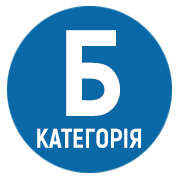THE THEORY OF EQUIVALENTS IN PATENT LAW
Keywords:
the theory of equivalents, inventions, utility modelsAbstract
In the article there is considered the question of a possibility of creation of the doctrine of equivalents as the strict scientific theory on the basis of the theory of conclusions by A. I. Uyemov’s analogy within which synthesis of the theory of similarity having paramount value for practice of patent work is already undertaken.
The invention and its technical equivalents is offered to consider respectively as a prototype and models. It allows transferring to the theory of equivalents of the rule of conclusions on analogies and conditions of reliability (verification) of such conclusions. In this case a conclusion about equivalence of technical solution to some invention can be proved depending on whether necessary and sufficient conditions for recognition of such equivalent are satisfied by model of the considered technical solution, whether there corresponds the model to the prototype and whether allows in this or that capacity to predict model behavior of a prototype.
Through fundamental concepts of the theory of conclusions by analogy (the internal and external relations, essential properties, and structure) the explication of the main terms of the theory of equivalents is given: prototype, equivalence, equivalent, law of the nature, function of sign of a formula and technical result. Thanks to it, it is emphasized that modeling of processes in a prototype is based on that, as in model, and in a prototype the same laws of the nature (the technical principles) which possess a certain degree of independence in relation to the correlates that actually explains a possibility of existence of equivalents from the ontological point of view can be carried out. Also it is paid attention that different laws of the nature, being the internal relations, possess different degree of independence of the correlates that narrows or, on the contrary, expands a circle of possible equivalents for inventions from different areas of the equipment.
References
Тофіло А. В. Набуття прав інтелектуальної власності : навч. посібник / А. В. Тофіло, О. Д. Лєвічева. — Київ : Держ. ін-т інтел. власн., 2008. — 300 с.
Гурьянов П. П. Теория эквивалентов и ее использование при толковании формулы изобретения / П. П. Гурьянов, Л. О. Сольц, Э. И. Фурман. — М. : ЦНИИПИ, 1971. — 90 с.
Цофнас А. Ю. Гуманитарные науки — это науки? / А. Ю. Цофнас // Гуманітарно-наукове знання: становлення парадигми : матеріали міжнародної наукової конференції, 7–8 жовтня 2011 р. — Чернівці, 2011. — С. 12–15.
Морская О. Г. Применение понятия «эквивалентный признак» при установлении факта использования изобретения (полезной модели) / О. Г. Морская, А. Д. Аверьянов ; Рос. агентство по пат. и товар. знакам, Федер. ин-т пром. собственности. — М. : ИНИЦ Роспатента, 2001. — 63 с.
Джермакян В. Доктрина эквивалентов (теория и российская практика) [Электронный ресурс] / В. Джермакян. — Режим доступа : https://vk.com/doc-20314689_134730285.
Федоров А. А. Правова охорона дизайнерських рішень в Україні : монографія / А. А. Федоров. — Одеса : Бахва, 2015. — 172 с.
Уемов А. И. Основы практической логики с задачами и упражнениями / А. И. Уемов. — Одесса : Одес. гос. ун-т им. И. И. Мечникова, филос. отд. ИСН, 1999. — 388 с.
Уемов А. И. Логические основы метода моделирования / А. И. Уемов. — М. : Мысль, 1971. — 311 с.
Уемов А. И. Аналогия в практике научного исследования / А. И. Уемов. — М. : Наука, 1970. — 264 с.
Уемов А. И. Вещи, свойства и отношения / А. И. Уемов. — М. : АН СССР, 1963. — 184 с.






